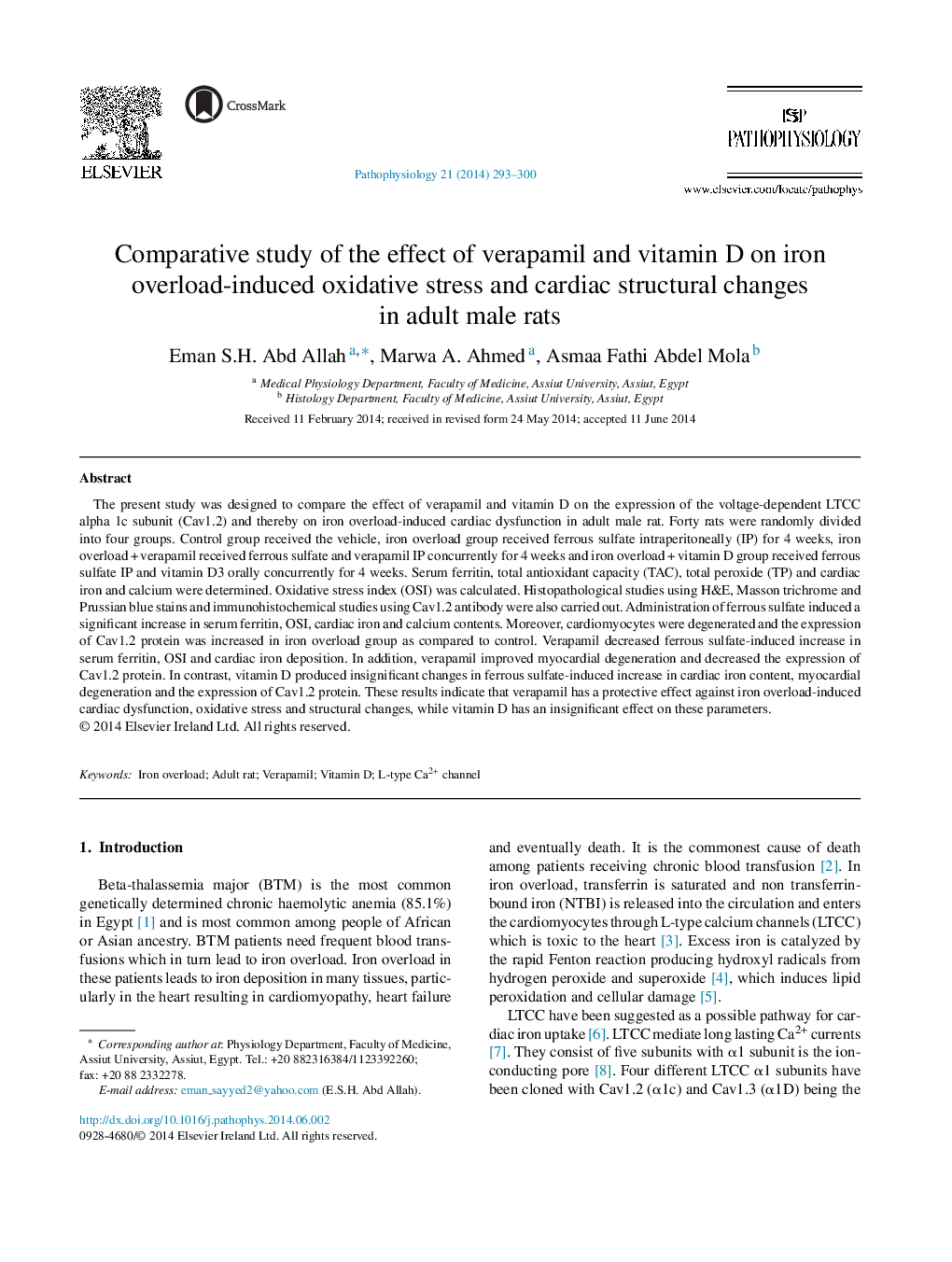| Article ID | Journal | Published Year | Pages | File Type |
|---|---|---|---|---|
| 4137036 | Pathophysiology | 2014 | 8 Pages |
The present study was designed to compare the effect of verapamil and vitamin D on the expression of the voltage-dependent LTCC alpha 1c subunit (Cav1.2) and thereby on iron overload-induced cardiac dysfunction in adult male rat. Forty rats were randomly divided into four groups. Control group received the vehicle, iron overload group received ferrous sulfate intraperitoneally (IP) for 4 weeks, iron overload + verapamil received ferrous sulfate and verapamil IP concurrently for 4 weeks and iron overload + vitamin D group received ferrous sulfate IP and vitamin D3 orally concurrently for 4 weeks. Serum ferritin, total antioxidant capacity (TAC), total peroxide (TP) and cardiac iron and calcium were determined. Oxidative stress index (OSI) was calculated. Histopathological studies using H&E, Masson trichrome and Prussian blue stains and immunohistochemical studies using Cav1.2 antibody were also carried out. Administration of ferrous sulfate induced a significant increase in serum ferritin, OSI, cardiac iron and calcium contents. Moreover, cardiomyocytes were degenerated and the expression of Cav1.2 protein was increased in iron overload group as compared to control. Verapamil decreased ferrous sulfate-induced increase in serum ferritin, OSI and cardiac iron deposition. In addition, verapamil improved myocardial degeneration and decreased the expression of Cav1.2 protein. In contrast, vitamin D produced insignificant changes in ferrous sulfate-induced increase in cardiac iron content, myocardial degeneration and the expression of Cav1.2 protein. These results indicate that verapamil has a protective effect against iron overload-induced cardiac dysfunction, oxidative stress and structural changes, while vitamin D has an insignificant effect on these parameters.
